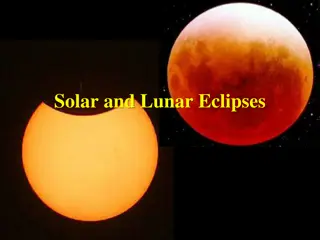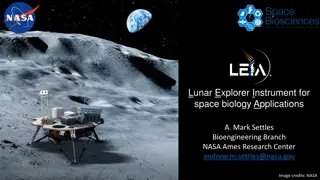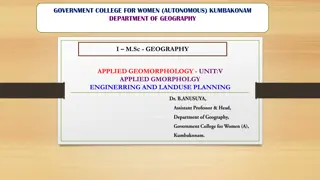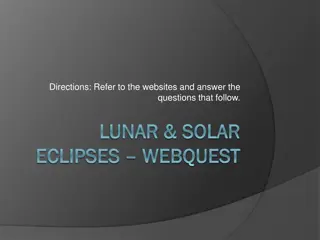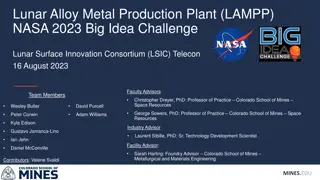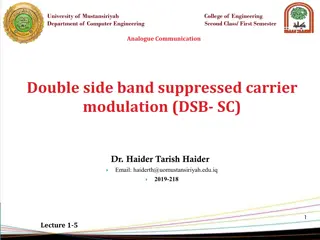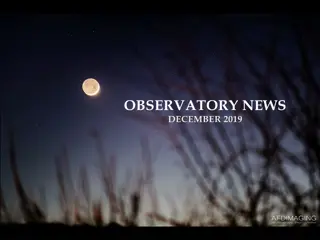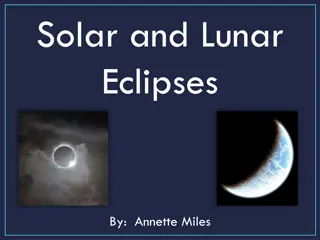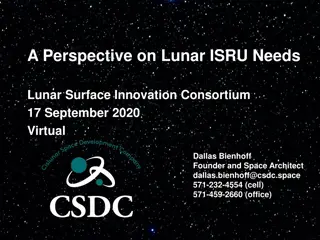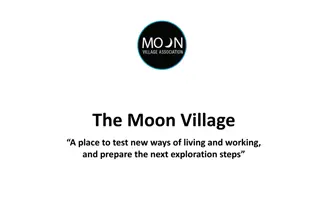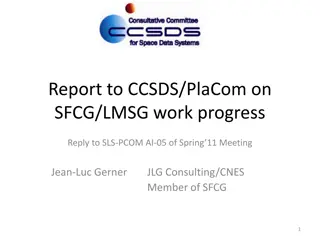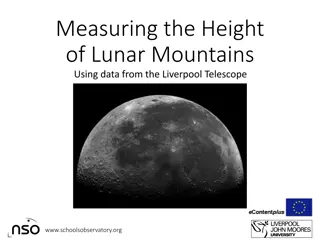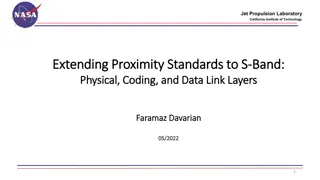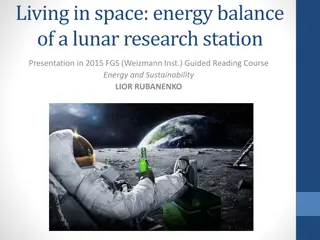Lunar Analogue Terrains
Detailed study of magma viscosity and lava flow velocity on Earth and the Moon as analyzed by David A. Kring in 2011. Explore the differences and similarities in these key geological processes between the two celestial bodies, shedding light on their unique volcanic landscapes and the underlying principles governing magma behavior under varying conditions.
Download Presentation

Please find below an Image/Link to download the presentation.
The content on the website is provided AS IS for your information and personal use only. It may not be sold, licensed, or shared on other websites without obtaining consent from the author.If you encounter any issues during the download, it is possible that the publisher has removed the file from their server.
You are allowed to download the files provided on this website for personal or commercial use, subject to the condition that they are used lawfully. All files are the property of their respective owners.
The content on the website is provided AS IS for your information and personal use only. It may not be sold, licensed, or shared on other websites without obtaining consent from the author.
E N D
Presentation Transcript
Lunar Analogue Terrains Briefing Topic: Magma Viscosity and Lava Flow Velocity, Earth and Moon David A. Kring LPI-JSC Center for Lunar Science and Exploration 2011
Magma Viscosity The viscosity of magma, including extruded lava, depends on 4 parameters: Composition Viscosity increases when there are more bridging oxygens when there is more silica when there is less water when there is less K2O Temperature Viscosity increases as temperature decreases Gas content Viscosity increases as volatile (H2O, CO, etc.) content decreases Amount of solid material Viscosity increases as the amount of crystals or other entrained material increases Effective viscosity = e = f (1 1.35 C) -2.5 where C = proportion of suspended particles LPI-JSC Center for Lunar Science and Exploration 2011 Kring s PtyS511 Lecture Notes
Magma Viscosity Amount of solid material (continued) For example: will be 10 times more viscous than a basalt magma w/o crystals. The viscosity of a basalt magma composed of 25% entrained crystals effusive manner (i.e., as a typical lava flow), although it could still erupt explosively. A basalt magma with 25% crystals would not be able to erupt in an LPI-JSC Center for Lunar Science and Exploration 2011 Kring s PtyS511 Lecture Notes
Viscosities of (experimental) lunar basalts 1.E+05 1.E+04 Viscosity (Poise) 50.12 wt% SiO2 1.E+03 12015 Basalt LKFM Basalt 46.74 wt% SiO2 1.E+02 1.E+01 1.E+00 800 900 1000 Temperature ( C) 1100 1200 1300 LPI-JSC Center for Lunar Science and Exploration 2011 Kring and McKay (1983)
Densities of (experimental) lunar basalts 2.9 Density (g/cm3) 2.8 12015 Basalt LKFM Basalt 2.7 2.6 800 900 1000 Temperature ( C) 1100 1200 1300 LPI-JSC Center for Lunar Science and Exploration 2011 Kring and McKay (1983)
Viscosity in Planetary Magma Systems Magma Type Extrusion Temperature (K) Extrusive Viscosity (Poise) Liquid Density (g/cm3) Basalt Lunar (~40% SiO2) Tholeiite (~50% SiO2) 1600 - 1700 1400 - 1500 102 - 103 10 2.7 2.6 Andesite (~62% SiO2) 1300 - 1400 106 - 107 2.45 Rhyolite (~75% SiO2) 1100 - 1200 1010 - 1011 2.2 Common materials Glacier ice Honey Machine oil 270 295 295 1015 102 1 Note: 10 Poise = 1 Pa s LPI-JSC Center for Lunar Science and Exploration 2011 Kring s PtyS511 Lecture Notes
Lava Flow Velocity The distance lava flows is primarily a function of: flow velocity cooling rate volume erupted eruption rate Mean velocity can be estimated from Jeffrey s equation for laminar flow V = g (sin ) d2 / 3 Where V = mean velocity, g = gravity, d = flow thickness, = slope angle, = fluid density, and = viscosity. (this formulation does not account for temperature and viscosity gradients) Flow velocities on the Moon are nearly 4 times faster than those on Earth, because of lower viscosity and higher density of lunar basalt, which more than offsets the lower lunar gravity. On Earth, basalt flows from 8 cm/s to 1500 cm/s (0.3 to 55 km/hr). LPI-JSC Center for Lunar Science and Exploration 2011 Kring s PtyS511 Lecture Notes
Lava Flow Velocity V (lunar basalts) 4 x V (terrestrial basalts) Properties of typical lunar and terrestrial basalts Solid density (g / cm3) Fluid density (g / cm3) Liquidus temperature ( C) Viscosity (poise) Thermal conductivity (cal / cm / s / C) 3 x 10-3 Terrestrial 2.8-3.0 2.6 1150 200 Lunar 3.4 2.95 1300 10 1.5 x 10-3 LPI-JSC Center for Lunar Science and Exploration 2011 Kring s PtyS511 Lecture Notes
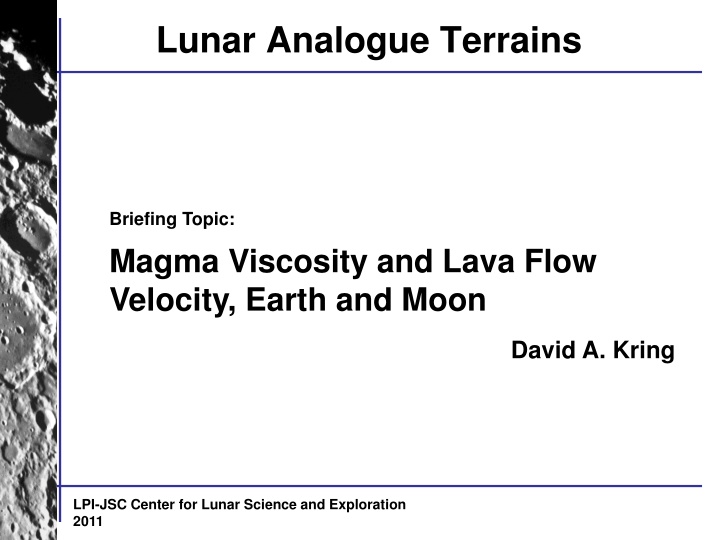

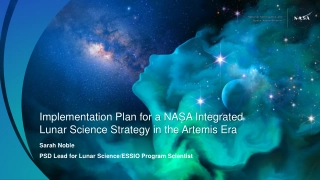
![get⚡[PDF]❤ Building Habitats on the Moon: Engineering Approaches to Lunar Settle](/thumb/21624/get-pdf-building-habitats-on-the-moon-engineering-approaches-to-lunar-settle.jpg)
